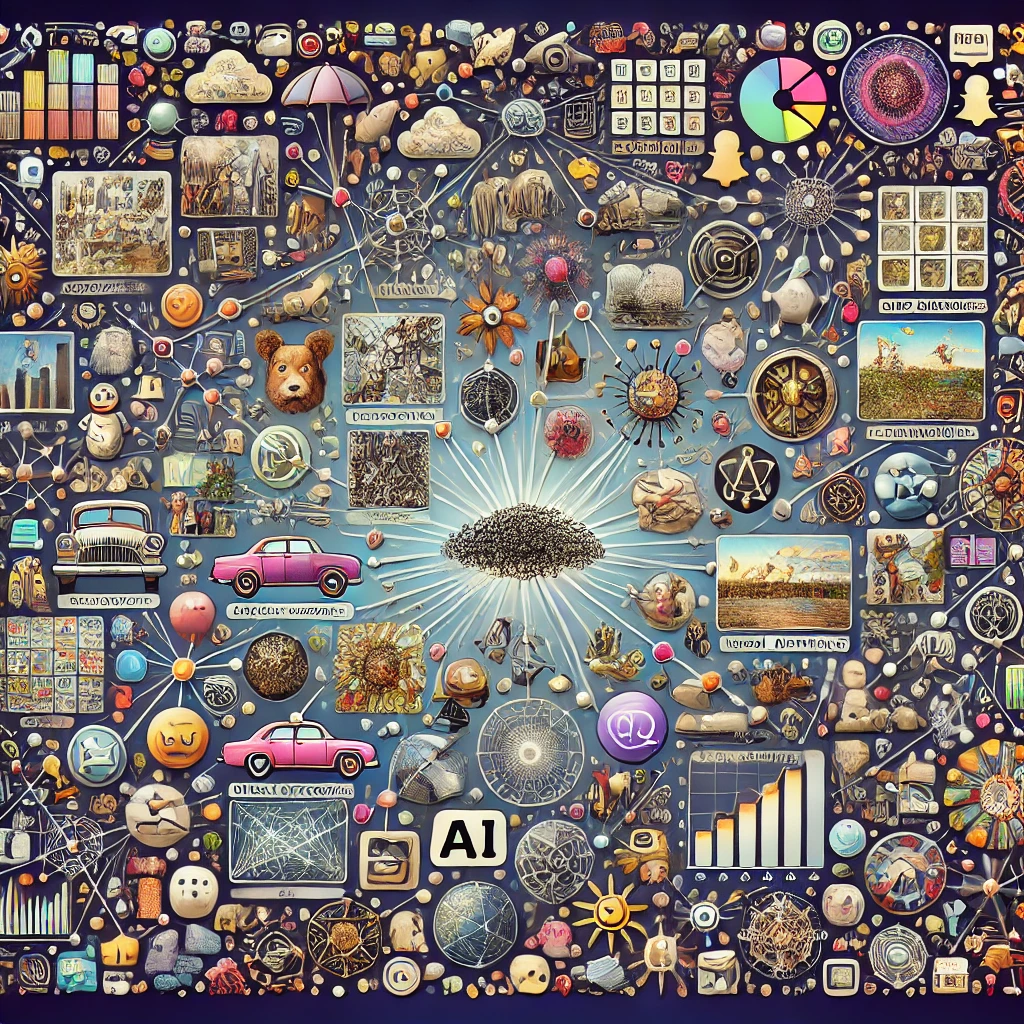ImageNet, a landmark in the field of Artificial Intelligence (AI), has played a pivotal role in shaping modern computer vision and AI technologies. Launched in 2009, it provided a vast dataset for training machine learning models, particularly for visual recognition tasks. The following article will delve into when ImageNet was created, its goals, how it has influenced AI development, and the records that have been broken throughout its history.
The Birth of ImageNet: 2009
ImageNet was developed by Fei-Fei Li↗, a professor of computer science at Stanford University↗. It officially debuted in 2009, inspired by the need for a large-scale annotated dataset to push forward the development of computer vision and AI. ImageNet was built as a database of more than 14 million images, labeled across more than 20,000 categories, from animals to objects. These images were gathered from the web and manually annotated by human workers.
ImageNet’s Goals
The primary objective behind ImageNet was to create a comprehensive resource for training AI models, especially for visual recognition tasks. Before ImageNet, datasets for image classification were much smaller and limited in scope. ImageNet provided the scale necessary to push AI beyond mere toy tasks toward more real-world applications.
ImageNet had two major goals:
- Large-Scale Visual Data: To create a vast dataset that could train deep learning models effectively, allowing AI to better “understand” the world visually.
- Benchmarking Performance: The creation of the annual ImageNet Large Scale Visual Recognition Challenge (ILSVRC)↗, a competition to benchmark the accuracy of machine learning models, was another core objective. The competition became a standard to evaluate advancements in computer vision.
How ImageNet Transformed AI Development
The creation of ImageNet and the subsequent competitions significantly impacted the development of deep learning and neural networks, ushering in the modern AI era. Here are some of the most profound ways it helped:
- Deep Learning Revolution: ImageNet played a crucial role in popularizing deep learning. Models based on convolutional neural networks (CNNs), such as AlexNet (which won the 2012 ILSVRC), gained prominence because of their high accuracy in recognizing images, significantly reducing the error rate in visual tasks.
- Transfer Learning: The huge volume of labeled images in ImageNet enabled AI researchers to pre-train their models on a large dataset and then fine-tune them on more specific datasets. This transfer learning approach has been a critical strategy for developing models in other domains where data scarcity is an issue.
- Wider AI Adoption: By providing a reliable benchmark, ImageNet motivated companies and research labs to invest in AI, accelerating its adoption across industries. This dataset has been widely used in applications ranging from facial recognition to autonomous driving.
- Breakthrough in Accuracy: Before ImageNet, AI struggled with error rates that were too high for practical applications. ImageNet made it possible to drastically reduce these error rates through deep learning, making AI viable for real-world use cases.
Breaking Records: Landmark Achievements
The ILSVRC competition has witnessed multiple milestones in AI development, with many records broken, especially in error reduction. Below are some key moments:
- 2012: AlexNet – The AlexNet model, developed by Geoffrey Hinton↗ and his students, reduced the error rate in the ImageNet competition from 26% to 15%. This was a revolutionary moment in AI, marking the rise of deep learning.
- 2014: VGG and GoogleNet – In 2014, the Visual Geometry Group (VGG) model achieved an error rate of 7.3%, while Google↗’s GoogLeNet reduced the error rate even further to 6.7%, introducing the concept of deeper and more complex neural networks.
- 2015: ResNet – The Microsoft↗-developed ResNet (Residual Network) model achieved a new milestone with an error rate of 3.6%. ResNet’s innovative architecture allowed for much deeper networks by using “skip connections” to avoid issues like vanishing gradients.
- 2017: SENet – In 2017, SENet (Squeeze-and-Excitation Networks) achieved an impressive 2.25% error rate, further refining the neural network architecture.
- 2020 and Beyond: Models like EfficientNet, built on neural architecture search, have further pushed the boundaries of accuracy and computational efficiency. As of 2020, the top-performing models have error rates approaching or below 1%.
Conclusion: The Enduring Impact of ImageNet
ImageNet has been a cornerstone in the development of AI, particularly in the field of computer vision. Its creation enabled the deep learning revolution, which in turn transformed industries ranging from healthcare to transportation. Through yearly competitions, it set the stage for innovation, with models breaking records in accuracy and achieving milestones that were once thought impossible.
As AI continues to evolve, the legacy of ImageNet remains strong. It is not only a resource but a catalyst for continued growth in AI capabilities. The data and innovations that emerged from ImageNet have pushed AI to the forefront of technological progress.
“I, Evert-Jan Wagenaar, resident of the Philippines, have a warm heart for the country. The same applies to Artificial Intelligence (AI). I have extensive knowledge and the necessary skills to make the combination a great success. I offer myself as an external advisor to the government of the Philippines. Please contact me using the Contact form or email me directly at evert.wagenaar@gmail.com!”
[SEO optimized]
